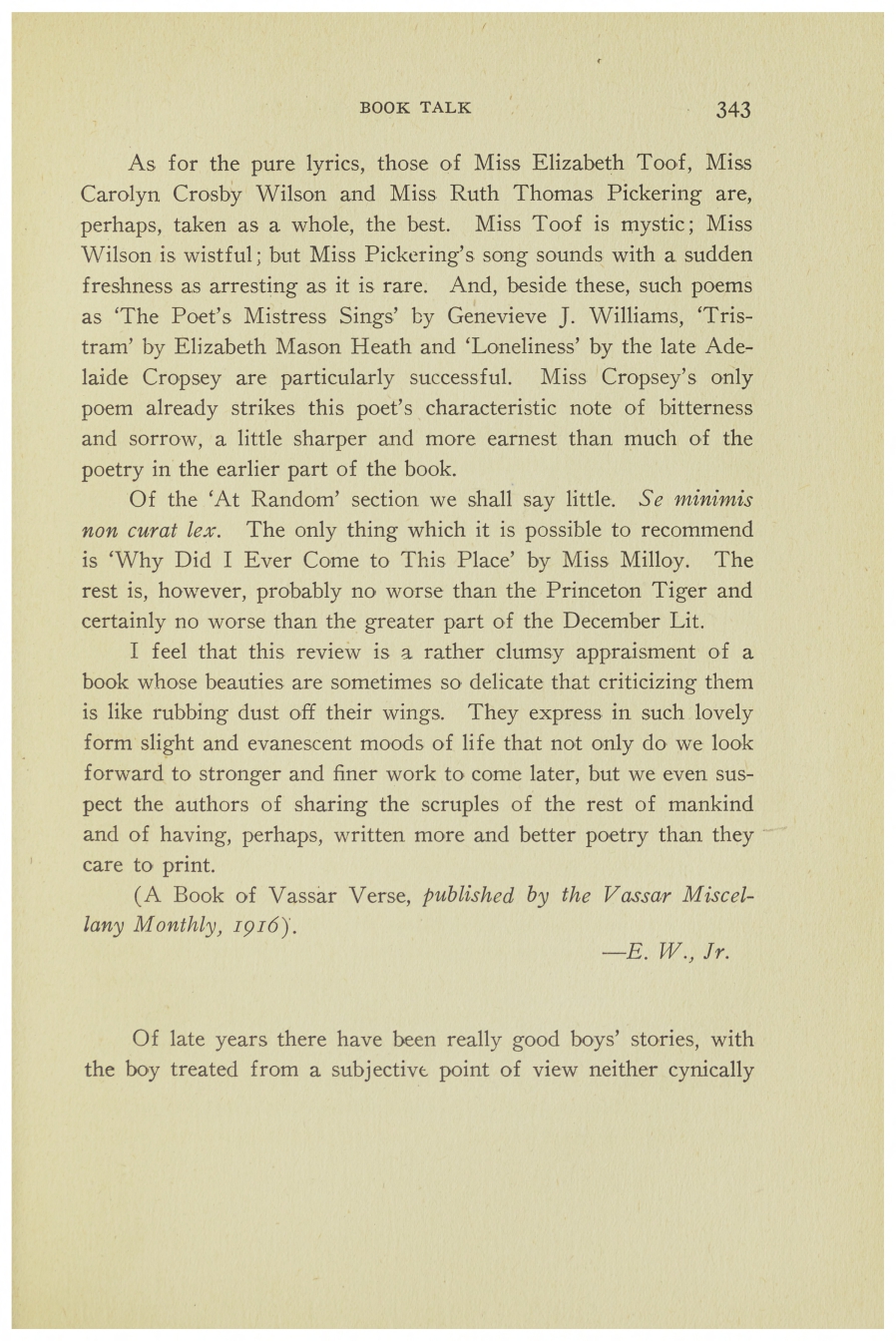
Review of E. F. Benson’s “David Blaize”
by F. Scott Fitzgerald
Of late years there have been really good boys’ stories, with the boy treated from a subjective point of view neither cynically nor sentimentally. In the class belong The Varmint,1 Youth’s Encounter,2 Seventeen,3 and perhaps a new book, David Blaize, by E. F. Benson, author of Dodo. Benson, by the way, is one of the famous Benson trilogy with Arthur C. Benson and the late Monsignor Robert Hugh Benson.4 The book carries the English hero through his last year at a “private” school and through three forms at an English public school, presumably Eton under the name of Marchester.
Frank Maddox, David’s first and last hero, is the strongest personality in the book, David being rather a peg on which the author hangs virtues and adventures. The book starts well and until three-quarters the way through is very interesting. Then follows a long and, to an American, dry and unintelligible account of a cricket match in which, by careful sounding, we fathom that the hero and his idol Frank Maddox, in the orthodox Ralph Henry Barbour5 manner, win the day for the school.
Mr. Benson’s indebtedness to Compton Mackenzie and Kipling6 is very great. Swinburne7 introduces David to literature as he did Michael in Youth’s Encounter, and the disagreement of David with the prefects is very like certain chapters in Stalky’s8 career. The one incident which forms the background of the book is foreign to anything in our preparatory schools and, although handled with an overemphasized delicacy, seems rather unnecessary and unhealthy from our point of view.
One of the great charms of the book lies in the chapters where Frank first lights upon David near the old cathedral and where David is visiting Frank at the seashore. The chapter on David’s love affair is poorly written and seems a half-hearted attempt to make him seem well-rounded. The last melodramatic incident, the injury and recovery of the hero, is well done but does not go for unity. The first two-thirds of the book is immensely entertaining, the last third disappointing.
(David Blaize, by E. E Benson, The George Doran Company, New York. $1.35 net).
—F.S.E
Notes
1. A 1910 prep-school novel by Owen Johnson (1878-1952).
2. The American title for the first volume of Sinister Street (1913-1914), the two-volume novel by English writer Compton Mackenzie (1883-1972). This novel, set in an English public school and Oxford University, influenced the writing of This Side of Paradise.
3. 1916 novel by Booth Tarkington (1869-1946) about adolescent infatuation.
4. Dodo was published in 1893. The Bensons, extremely prolific writers, were sons of E. W. Benson (1829-1896), Archbishop of Canterbury. A. C. Benson (1862-1925) was a poet and diarist; E. F. Benson (1867-1940) is best remembered for his “Lucia” novels; fiction writer Robert Hugh Benson (1871-1914) was ordained by the Anglican Church in 1895 but converted to Roman Catholicism in 1903.
5. Barbour (1870-1944) was a prolific author of boys’ books, often about football.
6. Rudyard Kipling (1865-1936), English fiction writer and poet now best known for his stories set in India.
7. Algernon Charles Swinburne (1837-1909), English poet, whose work was admired by Fitzgerald at Princeton.
8. Stalky was the hero of Stalky & Co. (1899), stories by Kipling about English school boys.
Published in The Nassau Literary Magazine (February 1917).
Not illustrated.

